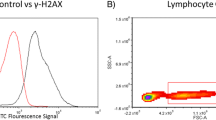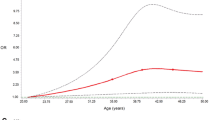Abstract
Objective: To determine the potential for asphalt fume exposure to increase DNA damage, we conducted a cross-sectional study of roofers involved in the application of roofing asphalt. Methods: DNA strand breaks and the ratio of 8-hydroxydeoxyguanosine (8-OHdG) to 2-deoxyguanosine (dG) were measured in peripheral blood leukocytes of roofers. In addition, urinary excretion of 8-OHdG and 8-epi-prostaglandin F2α (8-epi-PGF) was also measured. The study population consisted of 26 roofers exposed to roofing asphalt and 15 construction workers not exposed to asphalt during the past 5 years. A subset of asphalt roofers (n=19) was exposed to coal-tar pitch dust (coal tar) during removal of existing roofs prior to applying hot asphalt. Personal air monitoring was performed for one work-week to measure exposure to total particulates, benzene-soluble fraction of total particulates, and polycyclic aromatic compounds (PACs). Urinary 1-OH-pyrene levels were measured as an internal biomarker of PAC exposure. Results: Full-shift breathing zone measurements for total particulates, benzene-solubles and PACs were significantly higher for coal-tar exposed workers than for roofers not exposed to coal tar. Similarly, urinary 1-OH-pyrene levels were higher in coal-tar exposed roofers than roofers not exposed to coal tar. Total particulates or benzene-soluble fractions were not associated with urinary 1-OH-pyrene, but PAC exposure was highly correlated with urinary 1-OH-pyrene. When stratified by 1-OH-pyrene excretion, DNA strand breaks increased in a dose-dependent manner, and leukocyte 8-OHdG/dG decreased in a dose-dependent manner. Significant changes in DNA damage appeared to be linked to PACs from coal-tar exposure, although asphalt fume alone was associated with a small but significant increase in urinary 1-OH-pyrene and DNA strand breaks. Conclusions: Results are consistent with previous reports that asphalt or coal-tar exposure can cause DNA damage. Urinary 8-epi-PGF remained relatively constant during the week for virtually all subjects, regardless of exposure indicating that neither asphalt nor coal-tar exposure induces an overt oxidative stress. A small, but statistically significant increase in 8OHdG was evident in end-of-week urine samples compared with start-of-week urine samples in roofers exposed to coal-tar. The increase in urinary 8OHdG coupled with the decrease in leukocyte 8-OHdG/dG, suggests that coal-tar exposure induces protective or repair mechanisms that result in reduced levels of steady-state oxidative-DNA damage.
Similar content being viewed by others
Author information
Authors and Affiliations
Additional information
Received: 5 September 2000 / Accepted: 20 February 2001
An erratum to this article is available at http://dx.doi.org/10.1007/s00420-002-0321-9.
Rights and permissions
About this article
Cite this article
Toraason, M., Hayden, C., Marlow, D. et al. DNA strand breaks, oxidative damage, and 1-OH pyrene in roofers with coal-tar pitch dust and/or asphalt fume exposure. Int Arch Occup Environ Health 74, 396–404 (2001). https://doi.org/10.1007/s004200100238
Issue Date:
DOI: https://doi.org/10.1007/s004200100238




